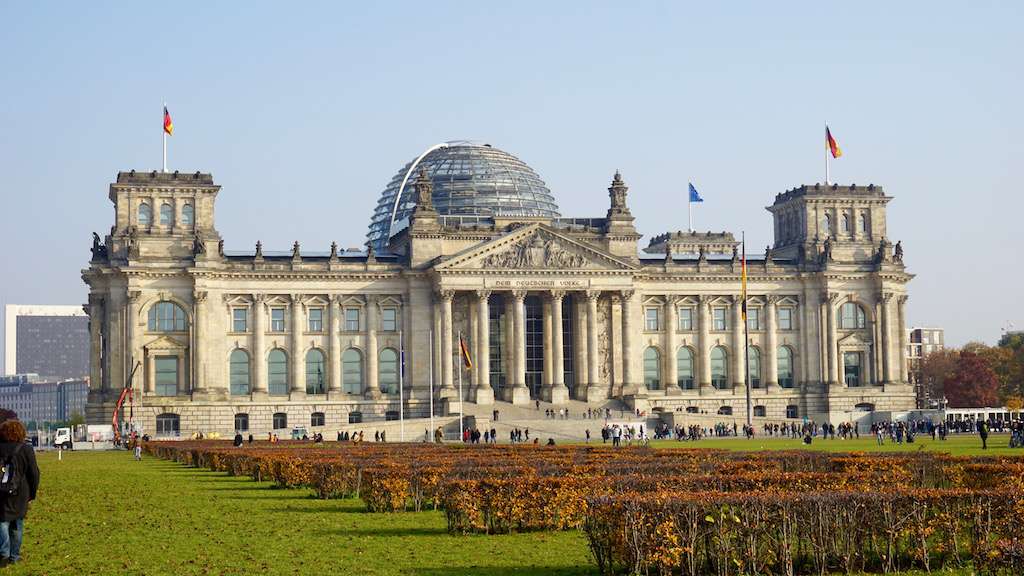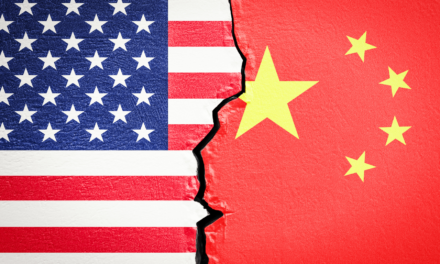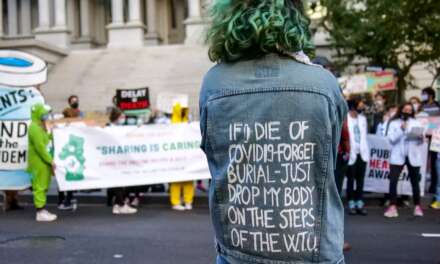originally published by Asienhaus
It is hardly known to German taxpayers, that they are one of the major shareholders in the Asian Development Bank (ADB). Even less is known about the role it plays, through its contributions and voting power, in this financial institution that is shaping the economies of many Asian countries.
As the richest European economy playing a prominent role in the Eurozone and the fourth biggest globally by nominal domestic product, Germany is a mighty geo-economic power that is influential in determining and consolidating the current neoliberal economic growth model. It is one of the world’s biggest global capital exporter and its products enjoy huge global trade surpluses rivaled only by China. This power, described by Stephen Szabo as “underrated”[1] was built from practicing a foreign policy largely shaped by big business and financial interests. This realpolitik prioritizes the country’s economic prosperity above other interests that may or may not coincide with the US and Germany’s European partners.
The influence of German export and foreign investment firms in the global political economy is highly visible in the dominant role Germany plays in international financial institutions (IFIs). It is the third largest shareholder with the third largest voting power in the World Bank Group and the International Monetary Fund (IMF). It is also a key member and big shareholder in regional development banks such as the Asian Development Bank (ADB), the African Development Bank (AfDB), the European Bank for Reconstruction and Development (EBRD), and the Inter-American Development Bank (IADB). As expected, Germany joined the China-led Asian Infrastructure Invested Bank that was launched in April 1, 2015 with 4.57% capital share and 4.15% of total votes[2] making it the fourth largest shareholder and biggest non-regional member next to China, India and Russia.
The power of German investors and banks in IFIs were fully witnessed in the still unfolding economic and debt crisis in Greece. The austerity measures imposed on the Greek economy by the “troika” institutions of the European Union, the IMF, and the European Central Bank, where Germany is influential, shows how indebted countries lose their economic and financial autonomy. Debtor countries follow IFI-laid conditions whether their citizens agree with them or not. Many developing countries experienced the same pressures that the Greek government was put into, with similar if not more brutal long lasting results, in the form of structural adjustment programs in the 1980s. Being a major shareholder in IFIs even at times of economic crisis could be profitable as revealed by the Halle Institute for Economic Research’s study, showing Germany profited €100 billion[3] from the Greek debt crisis between 2010 to 2015.
The Asian Development Bank
The Asian Development Bank (ADB) is a regional development bank and a part of the broad group of international financial institutions (IFIs) that are also called multilateral development banks (MDBs) like the World Bank and the International Monetary Fund (IMF). IFIs are major sources of financial and technical support for developing countries. That position gives them the power to shape industrial and trade policies, economic priorities and development approaches of the countries that receive loans and technical assistance from them.
The ADB has been operating from its Main Headquarters in Manila, Philippines since December 19, 1966. It was conceived in the post-war rehabilitation and reconstruction of the early 1960s. Created during the first Ministerial Conference on Asian Economic Cooperation held by the United Nations Economic Commission for Asia and the Far East in 1963, it was envisioned as a financial institution that would be Asian in character. The ADB Charter states that it was established “to foster economic growth and co-operation in Asia and to contribute to the acceleration of the process of economic development of the member countries in the region, collectively and individually”[4]. Asia was then one of the poorest regions in the world.
From an authorized capital stock of US$ 1 billion in 1966, the Bank now has US$ 165 billion after its fifth capital increase in 2009[5]. In its early years, ADB’s focus was to give assistance on food production and rural development projects to its members. Slowly, technical assistance, loans on concessional terms and bond issue was also given. The assistance expanded into education and health and then infrastructure and industry in the 1970s.
ADB adopted poverty reduction as its overarching goal in 1999[6]. Since then, the bank claimed that its whole work is about improving the lives of the remaining 1.4 billion people in Asia that still live in poverty[7]. This mission is supposed to be delivered through provision of loans and financial assistance that encourage economic growth, human development, sound environmental management and promotion of women’s interests.
Like other MDBs, the ADB is managed and staffed by civil servants from member countries. It now employs 3,000 staff from 60 of its 67 member countries spread in twenty-nine Resident Missions across Asia and the Pacific region and in three Representative Offices in Tokyo for Japan, Frankfurt am Main for Europe and Washington DC for America. Although regional in character, 19 of the 67 member countries that own and financed the ADB are not from the region but from other parts of the globe.
Germany’s Role in the ADB: Contributions, Cofinancing and Procurement
Germany joined the Asian Development Bank (ADB) when it was founded in 1966. It has been one of the bank’s most important development partners[8] since then and is the biggest European shareholder. Japan and the US hold the biggest capital shares, together, the two already control one fourth of the votes in the bank, followed by China and India with five votes each. Germany is the 9th biggest owner of capital stock and owns 3.67% voting power in the bank. It has a cumulative total capital subscription contribution of $6.37 billion and $1.94 billion involvement in Special Funds like the Asian Development Fund, ADB’s window for concessional lending to its borrowing members by the end of 2015[9].
In 2015, the ADB’s lending volume was $15.45 billion (109 projects), with technical assistance at $141.3 million (199 projects) and grant-financed projects at $365.15 million (17 projects). In addition, $10.74 billion was generated in direct value-added cofinancing. Since 2009, ADB’s Trade Finance Program has worked with 26 banks in Germany and has supported 162 transactions worth $310 million.
The bank’s website identify the bank’s cofinancing projects with Germany from 2011-2015 amounting to $2.28 billion. These are divided into Official Grants ($23.66 million), Official Loans ($1,796.25 million), Commercial Cofinancing ($456.55 million) and Technical Assistance ($0.36 million)
Some of these projects include the City Region Development in Bangladesh, the Beijing–Tianjin–Hebei Air Quality Improvement Policy Reforms Program in China, the Green Energy Corridor and Grid Strengthening in India, the Sustainable and Inclusive Energy Program in Indonesia, the Ho Chi Minh City Urban Mass Rapid Transit Line 2 Investment Program in Vietnam and other regional projects.
As Asia’s leading institution providing loans that fund projects and activities across the continent in sectors such as infrastructure, transportation, agriculture, social development, finance, and governance, the ADB provides billions of dollars worth of procurement for goods, consulting services, equipment and supplies for civil works and other related services yearly. ADB Procurement Contracts are awarded through internationally competitive bidding where only companies from the ADB member countries could participate. Private companies, large engineering firms, consulting and construction companies from big donor countries like Germany are often awarded huge shares of those procurements contracts.
Since 1966 to 2015, there were 199,625 contracts for goods, works, and related services under ADB loan and grant projects amounting to $145.92 billion. From this 1,972 contracts worth $2.7 billion were awarded to German contractors and suppliers. In the same period, there were 48,767 contracts for consulting services under ADB loan, grant, and technical assistance projects worth $10.64 billion, 708 contracts were awarded to consultants from Germany worth $447.33 million. The biggest companies involved in procurement are Siemens Aktiengesellschaft (energy projects), Ludwig Pfeiffer Hoch-und Tiefbau GmbH & Co. (for Public Sector Management and Water and other Urban Infrastructures and Services), Kirow Ardelt GmbH (transport), Alstom Grid (energy) and
Bauer Maschinen GmbH (for transport).
As argued in an earlier Asienhaus paper on the ADB[10], MDBs such as the Asian Development Bank are public institutions funded by taxpayers’ money so we, the citizens, are supposed to own them. It was created by public funds allocated by member governments. It operates both as a public entity as well as a multilateral, public business enterprise. This raises the importance of diligence on the part of the bank to ensure that its projects are actually solving poverty, protecting the environment and raising standard of living in Asia. If the opposite is happening, affected communities and concerned NGOs and social movements there, in co-operation with groups from donor countries like Germany, must engage and ensure that the people’s rights, interests and the commons are protected.
As tax money from member countries are being used in the pursuance of the ADB’s claims as reasons for its existence, it is important to see that ADB-funded projects are not multiplying poverty, producing injustices, creating human rights violations, and contributing to oppression and violence against marginalized sectors, environmental degradation and other ill-effects.
Does the Changing Landscape of Multinational Development Banks Offer Alternatives?
In recent years, several developing countries have taken steps to launch two new multilateral development banks. One of these is the Chinese-led
Asian Infrastructure Investment Bank (AIIB) and the other is the New Development Bank, often called the “BRICS Bank,” since its members include Brazil, Russia, India, China, and South Africa.
The New Development Bank was launched in July 2015 in Shanghai, China, and became the first major international financial institution led by emerging countries, set up as an alternative to the existing US-dominated World Bank and International Monetary Fund. Unlike other MDBs, which assign votes based on capital share, the member countries equally have one vote, and none will have veto power[11].
Despite initial opposition by the US and Japan, the China-led AIIB was founded on January 16, 2016 with fifty-seven members, including Germany, the UK and Australia, with a capital of $100 billion[12]. This is equivalent to two-thirds of the capital of the Asian Development Bank and about half that of the World Bank[13]. Mr. Jin Liqun, former Chairman of China International Capital Corporation, Vice President of the Asian Development Bank, and Vice Minister of Finance of China, was elected as first President.
Generally MDBs are important and strategic economic institutions that supported and promoted the Washington Consensus or the US’ leadership in shaping global trade and financial order over many decades. For many years, developing countries like China complained that the governance of MDBs does not reflect political realities and that the issues addressed by them do not represent the concerns of emerging markets and developing countries. However, it remains to be seen whether apart from leadership by the new powers in the new MDBs, they emerge as real alternatives, challenging the dominant economic growth perspectives and following more progressive policies, standards and mechanisms than the older MDBs.
The ADB after 50 Years: The Challenges faced by Movements and NGOs
In the five decades of ADB operations, dramatic transformations have occurred in Asia, which altered the political and economic contours of the region. China and India re-emerged as key players in global trade and investments and great changes are still unfolding in many Asian countries.
The influence of MDBs and regional development banks in economic development can be extensive. By claiming a mandate to reduce poverty, address climate change, produce energy that electrifies poorer areas, promote the status of women, etc., they shape knowledge, preferences and decisions over economic priorities and on what or who should be sacrificed in the pursuit of economic growth, especially in smaller low-income countries.
The major shareholders or the countries that provide most of the capital and own bigger votes in the bank’s decision-making largely determine policies, processes and manner of project implementation rather than the poorer members and borrower countries where the projects will be implemented. Loan recipients are influenced to follow the interests and economic agenda that banks promote and donor countries support, since approvals of loans are tied to the fulfillment of the requirements set by the Banks.
NGOs and social movements started to engage the ADB in the 1990s. The regional network NGO Forum on the Asian Development Bank had been organizing committed people and organisations, resources, energies, skills and other resources to design, produce and implement sophisticated campaigns centered on putting people’s interests and critique in its processes and engagement with the bank.
Affected people and their communities carry the consequences of ADB-funded projects. Eventually, the whole populations of the borrowing countries will have to live with the effects of indebtedness. What made the debt problem and the consequences of repayment of the debt by poor countries questionable is the fact that many external debts for development projects were incurred without the free, open and informed participation of the affected people. Some examples include the CAM: GMS Railway Rehabilitation in Cambodia, Mundra Mega Power Project in Gujarat, and the Phulbari Coal Project in Bangladesh.
Many countries in Asia, like in other developing regions, suffered long periods of undemocratic governance. Many dictators and despots prolonged their rules through suppression of dissent and crony capitalism supported by stolen and illegally amassed wealth. In many cases the wealth are from funds coming from MDB-funded projects and through plunder of their countries’ natural resources in partnership with chosen domestic and transnational corporations. Some countries are still governed by less democratic although elected leaders.
The primary result of indebtedness is the subscription to neoliberal approaches to development, economic policies and priorities that promote privatization of national assets and basic services that favor transnational corporations coming from donor countries. As argued by Shalmali Guttal of Focus on the Global South, “the ADB proclaimed a mission of being a development and a knowledge bank to address poverty while creating and multiplying poverty through continued transfer of natural wealth and public assets to private companies across the Asia and Pacific region”[14]. She observed that through loans, co-financing and Technical Assistance, the ADB creates and demands conditions for widespread privatization in virtually every sector, from transportation, energy and urban development to agriculture, water and finance. This development model created huge poverty, economic inequalities and given today’s crisis of capitalism, will not work in the present and future.
The other continuing problem with the ADB is its democracy deficit, a characteristic it shares with other MDBs, which merely reflect the asymmetry of power between countries in economic terms. Unlike the United Nations where each member hold equal votes of one each and wherein decisions are made by consensus, voting and exercise of power in MDBs are based on weighted voting system of contributions of members. The wealthy countries that own more shares control more votes and shape decisions. Only a handful of countries like the US, Japan, Germany, the UK, Canada and France normally control more than half of the votes in MDBs as in the case in the ADB.
The ADB President has always been a Japanese, similar to the manner that an American always preside over the World Bank and a European always heads the IMF. This is the unspoken, non-written but operating global rule on power sharing. These rich countries effectively impose their economic and financial predilection on developing countries, without themselves having to be subjected to them since the relationship is unequal – non-regional rich countries are donors and the poor countries from the region are borrowers.
In many engagements with NGOs and members of the NGO Forum on the ADB, the bank argues that their policies respect internationally recognized human rights standards and takes all necessary measures to ensure that their projects reflect that recognition. The ADB does have existing policies and mechanisms that are in place to observe rights and standards and there is a review process where civil society organizations can engage those policies. However, many social and environmental risks remain unaddressed in many projects despite the policy reforms and consultations organized by the bank. The rights of people to determine their future, practice food sovereignty and to rely on local knowledge are often denied by the one-size fits all dominant economic model. The right to be fully consulted remains unfulfilled and only inadequate remedial measures are applied in most cases.
Since climate change occupied right, front and center of international policies, the MDBs designed policy objectives and projects that are supposed to address climate change. MDBs also have Environmental and Social Safeguards or similarly named policy. Similar to its stance on poverty and self-claimed leadership in poverty reduction, the ADB also declared leadership in solving climate change and published voluminous documents about it. A joint research by Bank Information Center and Sierra Club[15] however, shows that none of the world’s main development banks is on track to help keep the world below the target in the UN Framework Convention on Climate Change.
Instead, MDBs continue to support fossil-fuel projects in developing countries. Although the ADB is the only MDB to specifically exclude finance for oil and gas exploration, it continues to fund coal projects. From 2011 to 2013, $900 million worth of ADB loans and technical assistance went to coal projects. Unlike other MDBs, the ADB still does not have any policy to restrict lending to coal power projects. Coal is a major cause of global warming. Also, the ADB does not have an overall target in its lending to reduce emissions.
The report also highlighted the fact that none of the MDBs adequately assess or address climate change risks associated with policy-lending, technical assistance, and financial intermediaries. Such assistance often results in undetected promotion of fossil fuel subsidies through support for government initiatives, which push investments and hinder the transition to low-carbon economy.
After fifty years, there are still huge needs for improvement in the operations of the ADB. Many movements have already expressed their position that the bank could not be reformed while many groups are still continuing their engagement. Whatever the position, it is essential that the engagement must be clear on the critique that finance from IFIs is meant to create more money and to promote private led growth based on cheap labor and environmental destruction that obliterate people’s livelihoods. At the same time, the processes and ways of organizing of movements and NGOs for engagement with institution like IFIs must continue to highlight the right of people and communities to determine what is best for them, horizontal relationships between communities and NGOs/campaigners, subsidiarity and collective ownership of initiatives that expand social power for all. This is where the transformative power of any political engagement lies.
*Dorothy Grace Guerrero is a freelance author and analyst based in London. She works with social movements and NGOs on climate and economic justice issues. She can be contacted through [email protected]
[1] Szabo, S. “Germany, Russia and the Rise of Geo-economics”, London, Bloomsbury Publishing, 2014
[2] Yang, X., “Germany to be the Largest Non-Regional Shareholder in AIIB”, Beijing Today, January 7, 2016
[3] IWH, Germany’s Benefits from the Greek Crisis, Leibniz Institut fuer Wirtschaftsforschung Halle, September 2015 http://www.iwh-halle.de/d/publik/iwhonline/io_2015-07.pdf
[4] Agreement Establishing the Asian Development Bank or ADB Charter, 1966
http://www.adb.org/sites/default/files/institutionaldocument/32120/charter.pdf accessed 11 March 2016.
[5] ADB Annual Report 2014, www.adb.org/ar2014 accessed 15 March 2016
[6] ADB, „Fighting Poverty in Asia and the Pacific: The Poverty Reduction Strategy“, Manila, November 1999
[7] ADB “Did You Know Asian Development Bank?” video, The ADB in the Spotlight, http://www.adb.org/about/main
[8] All figures in this part are from the Asian Development Bank and Germany Fact Sheet, March 2016 http://www.adb.org/publications/germany-fact-sheet
[9] ADB Annual Report 2014, ibid.
[10] see Guerrero, D. (ed) Focus Asien No. 16: A Handbook on the Asian Development Bank: The ADB and its Operations in Asia and the Pacific Region, Asienhaus 2003
[11] Agreement on the New Development Bank, July 15, 2014 http://ndbbrics.org/agreement.html
[12] See Blickwechsel ……
[13] “The Economist Explains”, The Economist, 11 November 2014
[14] Guttal, S., Pursuing Privatisation: The ADB’s Unchanging Vision of Development, Focus on the Global South, June 13, 2013 http://focusweb.org/content/pursuing-privatization-adbs-unchanging-vision-development
[15] Mainhardt, H. and Zinani, N., “MDBs Climate Change Scorecard: Do the MDBs pass the 2 degrees test?”, BIC and Sierra Club, December 2015







![[IN PHOTOS] In Defense of Human Rights and Dignity Movement (iDEFEND) Mobilization on the fourth State of the Nation Address (SONA) of Ferdinand Marcos, Jr.](https://focusweb.org/wp-content/uploads/2025/07/1-150x150.jpg)

